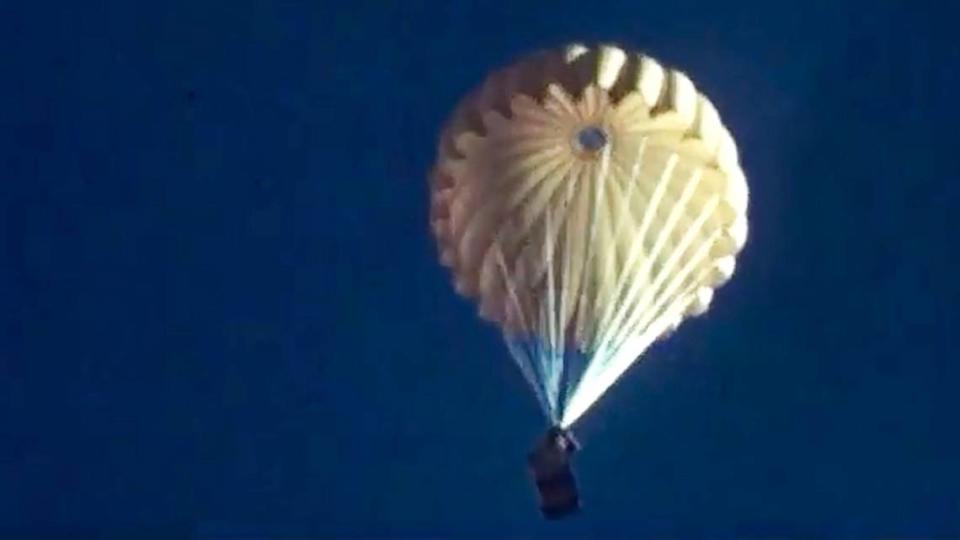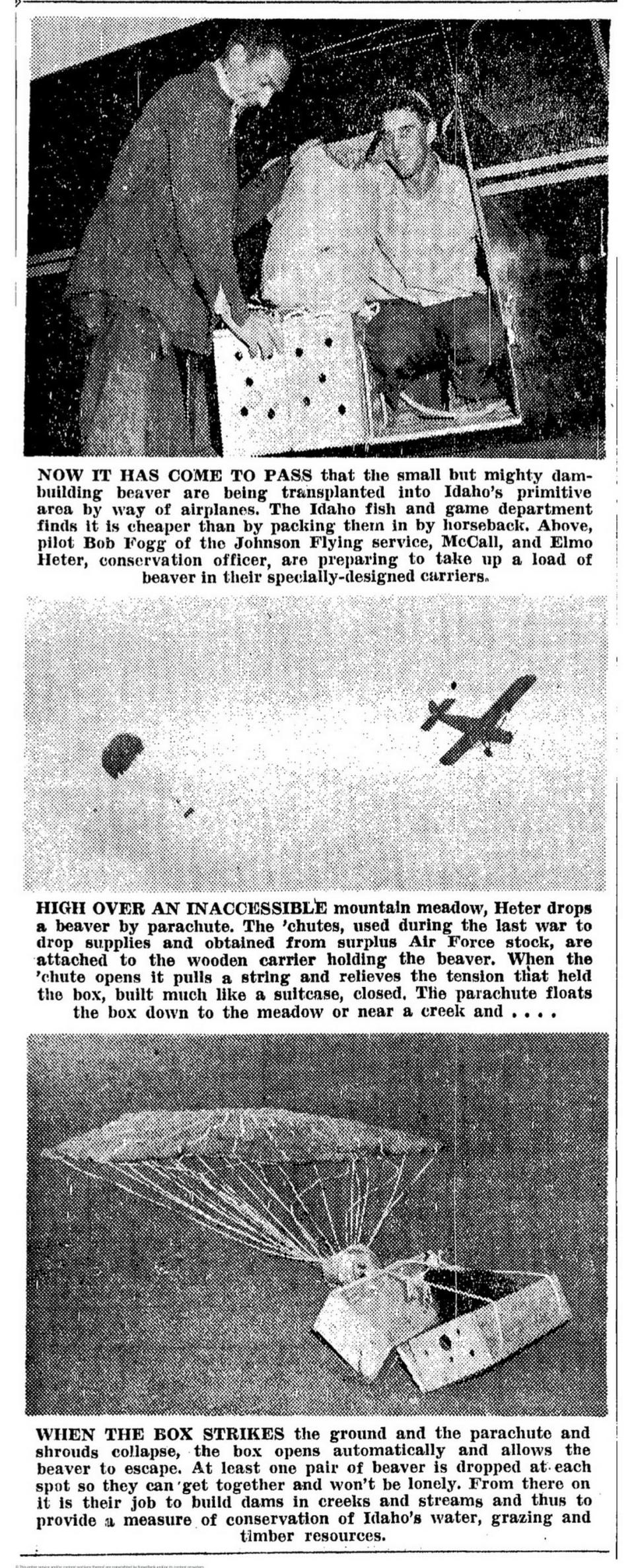It’s been 75 years since Idaho parachuted beavers into backcountry. Here’s what went down
In August of 1948, a handful of white parachutes billowed out from the side of a small plane, each drifting toward the Earth with a wooden crate a few inches larger than an airplane carry-on bag dangling below it.
As the parachutes touched down in a backcountry Idaho meadow, the ropes suspending the crates slackened, letting the two sides of the box fall apart. Inside each crate was an unusual passenger: a beaver.
Seventy-five years ago, dozens of the rodents were transported by parachute as Idaho Department of Fish and Game officials pioneered a never-before-seen — and never since repeated — method of relocating wildlife.
The project was meant to remove the animals from the shores of Payette Lake in McCall, where development was booming and the beavers were seen as a nuisance, to the remote Chamberlain Basin in what is now the Frank Church-River of No Return Wilderness.
The endeavor became an Idaho icon, with locally made clothing bearing a parachuting beaver logo, a children’s book detailing the beavers’ journey and even a Boise brewery adopting the image.

Beaver problem prompted innovation
The beaver parachute program came shortly after a turning point in the rodents’ history. Ben Goldfarb, a conservation journalist who wrote “Eager: The Surprising, Secret Life of Beavers and Why They Matter,” told the Idaho Statesman in an interview that beavers had been victims of geopolitical conflict in North America in the early 1800s.
Fur trappers largely eradicated the animals from the American West as part of a ploy to keep Americans from settling in the area. It took roughly a century before naturalists, Fish and Game agencies and other beaver advocates began to recognize how vital beavers were for landscapes. The early 20th century saw a push to restore beaver populations, and relocation was part of that.
Typically that was done by automobile or on horseback. But those efforts weren’t working, according to an article in the Journal of Wildlife Management by Idaho Fish and Game warden Elmo Heter, who led the parachute program.
Heter wrote that Idaho’s dense backcountry and lack of roads made vehicle relocation difficult. When beavers were transported on packhorses, they often became stressed and overheated, he said. The pack animals weren’t fans, either.
“Horses and mules become spooky and quarrelsome when loaded with a struggling, odorous pair of live beavers,” Heter wrote.
They looked to the sky for a solution and, after several iterations of baskets or crates to contain the beavers, landed on the self-opening design. A male beaver named Geronimo became the test pilot, enduring numerous drops to decide on the best technique. A column in the Aug. 29, 1948, issue of the Statesman claimed Geronimo came to enjoy the flights.
“Rather than developing apprehension after one drop, he seemed to gain confidence and actually crawled back in the box as though inviting the boys to come on and give him another whirl,” the column said.
In all, 76 beavers were relocated by parachute. One died when it escaped its crate in mid-air.
By all accounts at the time, the beaver drop was a success. Newspaper reports said within two weeks of the initial drop, Fish and Game was already seeing signs of beaver dam-building activity in the landing area.

Do beaver populations persist at parachute site?
Some of the details of the project and its later impacts are fuzzy.
A 2015 National Geographic article — published after the discovery of a 1950s Fish and Game video on furbearing animals thrust the parachuting rodents into the national spotlight — identified their destination as the Chamberlain Basin. An Associated Press story from September 1948 mentioned a dozen beavers dropped “in the Lochsa-Selway primitive area” near Lewiston. The Statesman’s coverage at the time wasn’t specific about where the beavers came from or ended up, nor was Heter’s Journal of Wildlife Management article.
Features in Time and Popular Mechanics Magazine applauded the experiment, but afterward it largely left the public eye until the 2010s. In between, Fish and Game continued to manage beaver populations through trapping and more traditional methods of relocation.
Fish and Game spokesperson Roger Phillips and furbearer biologist Cory Mosby told the Statesman by email that the state doesn’t conduct precise population estimates for beavers because Idaho has stable beaver numbers and plenty of habitat. That means the agency can’t pinpoint whether beavers still remain in the Chamberlain Basin parachute landing area.
“There’s been a fair number of fires in that area in the last 20 years or so, but if there are meadows, marshes and meandering streams lined with willows, chances are pretty good there are beavers in there,” Phillips said.
It’s impossible to know if any present-day beavers are the direct descendants of Geronimo or his cohorts. Phillips said it’s possible beavers would have recolonized the Chamberlain Basin without any help from Fish and Game.
Goldfarb, the author of “Eager,” said the airborne beavers may have left a lasting impact. Similar relocation efforts were “wildly successful” across the country, he said. The project may have even made space for more beavers along Payette Lake.
“When you remove the beavers, all you do is create a vacancy sign for the next family of beavers,” Goldfarb said.
The unanswered questions are part of the lore of the parachuting beavers, which Phillips called “a shining example” of Fish and Game’s innovation in managing wildlife.
Goldfarb dedicated a section of his book to discussing the experiment.
“It’s not only a funny, zany, weird incident, it’s also a really telling incident that occurs at this critical juncture in beaver history,” Goldfarb told the Statesman.
“It’s so cool and, in some ways, ahead of its time that Idaho Fish and Game would choose to relocate these animals rather than just kill them for causing conflict,” Goldfarb said.

